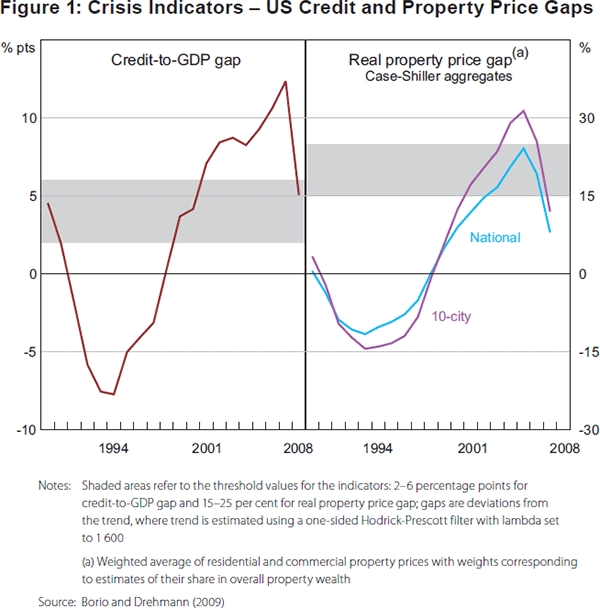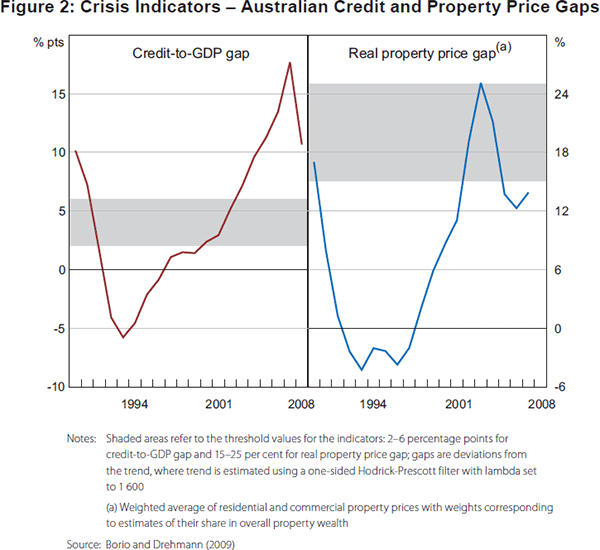RBA Annual Conference – 2011 Discussion
1. Eli Remolona[*]
Kevin Davis tells the story of the Australian financial system in the 2000s, and he tells it comprehensively. The story is told in several parallel narratives. There is a narrative on the economy, a narrative on the financial sector, a narrative on regulation and a narrative on financial institutions and markets. This is a masterful account, and any economist will be well advised to consult these narratives before running an econometric analysis of the Australian financial system.
As Kevin tells his story, one hears portentous music in the background. There is a boom in asset prices, and this may end in a bust. The four big banks depend on bond markets abroad to raise funds, while the small banks rely heavily on securitisation. Households enjoy incentives for leveraged investments and for risk-taking. Yet at the end of the story, nothing really bad happens. Somehow the Australian financial system emerges from the global financial crisis of 2008–2009 without serious injury. The crucial question is how come?
A good place to look for evidence is in credit growth in Australia. In Figure 4 of the paper, Kevin shows such growth for housing credit, business credit and total credit. Up until the end of 2007, credit growth and its various components were quite strong, with growth in business credit exceeding 20 per cent by the eve of the global financial crisis. Such credit growth does slow down during the crisis, but it is because of a contagion of risk aversion from global financial markets rather than because of any systemic financial distress within Australia.
From credit growth alone, it is hard to tell ex ante whether lending and borrowing in Australia were excessive. Kevin's story is a sequel to one by Phil Lowe on the financial system in the 1990s (Gizycki and Lowe 2000). Phil went on to write another paper, this time with Claudio Borio of the Bank for International Settlements, which offers a useful way to look more closely at the issue of excessive credit. Borio and Lowe (2002) estimate the trend in the ratio of credit to GDP for several countries by using a one-sided Hodrick-Prescott filter. They find that when deviations from that trend exceed a certain threshold, a banking crisis becomes likely. Borio and Drehmann (2009) have since updated that analysis to include data up to 2008. They also construct similar deviations from trend for real property prices. They find that their credit-to-GDP gaps and real property price gaps serve as useful early warning signals of whether a banking system becomes a victim of the global financial crisis.
To demonstrate the Borio-Lowe-Drehmann indicators, consider first the case of the United States. As shown in Figure 1, between 2001 and 2008, the credit-to-GDP gap exceeded 6 per cent, the top of the specified threshold range. The real property price gaps, based on two Case-Shiller indices, were in or above the threshold range between 2002 and 2007. Sure enough, the US financial system ended up in a crisis that reached global proportions.

In the case of Australia, those indicators also sent out danger signals but the result was different. As shown in Figure 2, the credit-to-GDP gap also exceeded the specified threshold range for a period before the crisis, while the real property price gap was in the threshold range for a few years. The outcome here, however, was completely different from that in the United States. In Australia, the global crisis was kept at bay. Informed narratives of these episodes suggest that the difference was not so much in the quantity of credit as in the quality of credit. Lending standards in the United States, especially in sub-prime mortgages, evidently deteriorated markedly in the period leading up to the crisis.

In various parts of the paper, Kevin offers several reasons for the difference in outcomes between Australia and the United States. Because Australian mortgages tend to be written with variable rates, households rather than banks bear the interest rate risk. The shadow banking sector was relatively small in Australia. The four pillar policy for banks created franchise value that inhibited the big banks from risk-taking. The memories of the problems of the 1990s and of the collapse of HIH Insurance were still fresh. The Twin Peaks model of bank regulation and securities markets oversight worked very well. The responses of the Reserve Bank of Australia at the onset of the global crisis were decisive, including the steps it took to restore liquidity to the repo market.
While all these reasons are highly plausible, I believe the difference in bank supervision and financial market regulation deserves more emphasis. Charles Goodhart (2010, p 173) said, ‘Any fool can make banks safer’. Indeed, it is not about how good the bank supervisors are. It is about their attitudes with regard to systemic risk and the efficiency of markets. Over the years, in the United States and Europe, banks' activities in financial markets were increasingly given the benefit of the doubt. The belief that such markets were always efficient held more and more sway.
The difference in attitudes is discernible in the various statements made on the eve of the global financial crisis. In the United States, the lack of alarm at the Federal Reserve is striking. The Federal Reserve in July 2007 said:
Large investment banks active in the securitization of subprime mortgages suffered modest hits to their earnings, and their CDS spreads are considerably higher than at the beginning of the year. To date, most large depository institutions appear to have been less affected by the subprime difficulties, in part because of their greater diversification and generally limited subprime lending activity.
(Federal Reserve 2007, p 22)
For its part, in April 2007, the International Monetary Fund appeared even more dismissive of systemic risks:
This weakness [the deterioration in the US subprime mortgage market] … is not likely to pose a serious systemic threat. Stress tests conducted by investment banks show that, even under scenarios of nationwide house price declines that are historically unprecedented, most investors with exposure to subprime mortgages through securitized structures will not face losses.
(IMF 2007, p 7)
Contrast the above statements with that made by the Reserve Bank of Australia, which has a mandate for financial stability, in March 2007:
A decidedly more pessimistic view is that the current favourable environment is inexorably sowing the seeds of its own demise … [T]he longer the underestimation of risk continues, the greater the imbalances in the system are likely to become, and hence the greater the potential for disruption when the correction takes place.
(RBA 2007, p 2)
Footnote
Bank for International Settlements. [*]
References
Borio C and M Drehmann (2009), ‘Assessing the Risk of Banking Crises – Revisited’, BIS Quarterly Review, March, pp 29–46.
Borio C and P Lowe (2002), ‘Assessing the Risk of Banking Crises’, BIS Quarterly Review, December, pp 43–54.
Federal Reserve (Board of Governors of the Federal Reserve System) (2007), ‘Monetary Policy Report to the Congress’, 18 July.
Gizycki M and P Lowe (2000), ‘The Australian Financial System in the 1990s’, in D Gruen and S Shrestha (eds), The Australian Economy in the 1990s, Proceedings of a Conference, Reserve Bank of Australia, Sydney, pp 180–215.
Goodhart C (2010), ‘How Should We Regulate the Financial Sector?’, in A Turner et al, The Future of Finance: The LSE Report, London School of Economics and Political Science, London, pp 165–186.
IMF (International Monetary Fund) (2007), Global Financial Stability Report – Market Developments and Issues, World Economic and Financial Surveys, IMF, Washington DC.
RBA (Reserve Bank of Australia) (2007), Financial Stability Review, March.
2. General Discussion
At the forefront of the discussion was the question of why Australia's financial system performed comparatively well during the global financial crisis. Following on from a point made during the discussion of the Kearns and Lowe paper, one participant highlighted that Australian banks held good quality assets on their books and so were less exposed when the crisis intensified and the value of some assets fell sharply. It was mentioned that this was similar to how Australia avoided the ‘tech wreck’ in the early 2000s, in that Australia did not have a large number of information technology firms starting up during that period. One participant thought luck and timing were relevant factors for Australia in both episodes. In particular, it was said that there were some signs of low-quality structured products entering the Australian market just prior to the collapse of Lehman Brothers, and that if the collapse had occurred later, then the story for Australia could have been different. Another participant mentioned that the funding model of the big investment banks in the United States would not have been permitted by Australian regulators.
Still on this issue, another key reason for Australia's relatively good economic performance during the crisis period highlighted by one participant was the timing of the housing cycle in Australia. House prices had lost momentum before the mid 2000s and so were not increasing in the years immediately prior to the GFC. Further, during 2003–2004 the RBA had highlighted that high leverage and borrowing for investing in property were growing risks in the housing market. The role of the floating Australian dollar as a key shock absorber for the economy was also discussed as a beneficial structural feature of the Australian financial system, as were the RBA and APRA. One participant thought smaller targeted interventions by policy-makers during the crisis were also useful, such as the fiscal stimulus directed at first-home buyers which was argued to have supported house prices. Another participant, however, emphasised that more empirical evidence needs to be provided before the success of such policies can be judged appropriately.
While the performance of Australia's financial system during the global financial crisis did compare favourably to those in the United States and Europe, it was suggested that it was far from smooth sailing. The failures in agribusiness and other non-prudentially regulated areas were highlighted, noting that there was significant financial dislocation that hurt investors in Australia. Importantly, however, these failures did not feed back into the rest of the financial system.
Looking to the future, one participant questioned whether or not the equity exposure of superannuation funds in Australia was likely to be a source of instability. Another participant thought a potential risk for the financial system is that banks might start to look to expand into international markets in order to increase revenues if domestic credit growth remains subdued for a prolonged period.